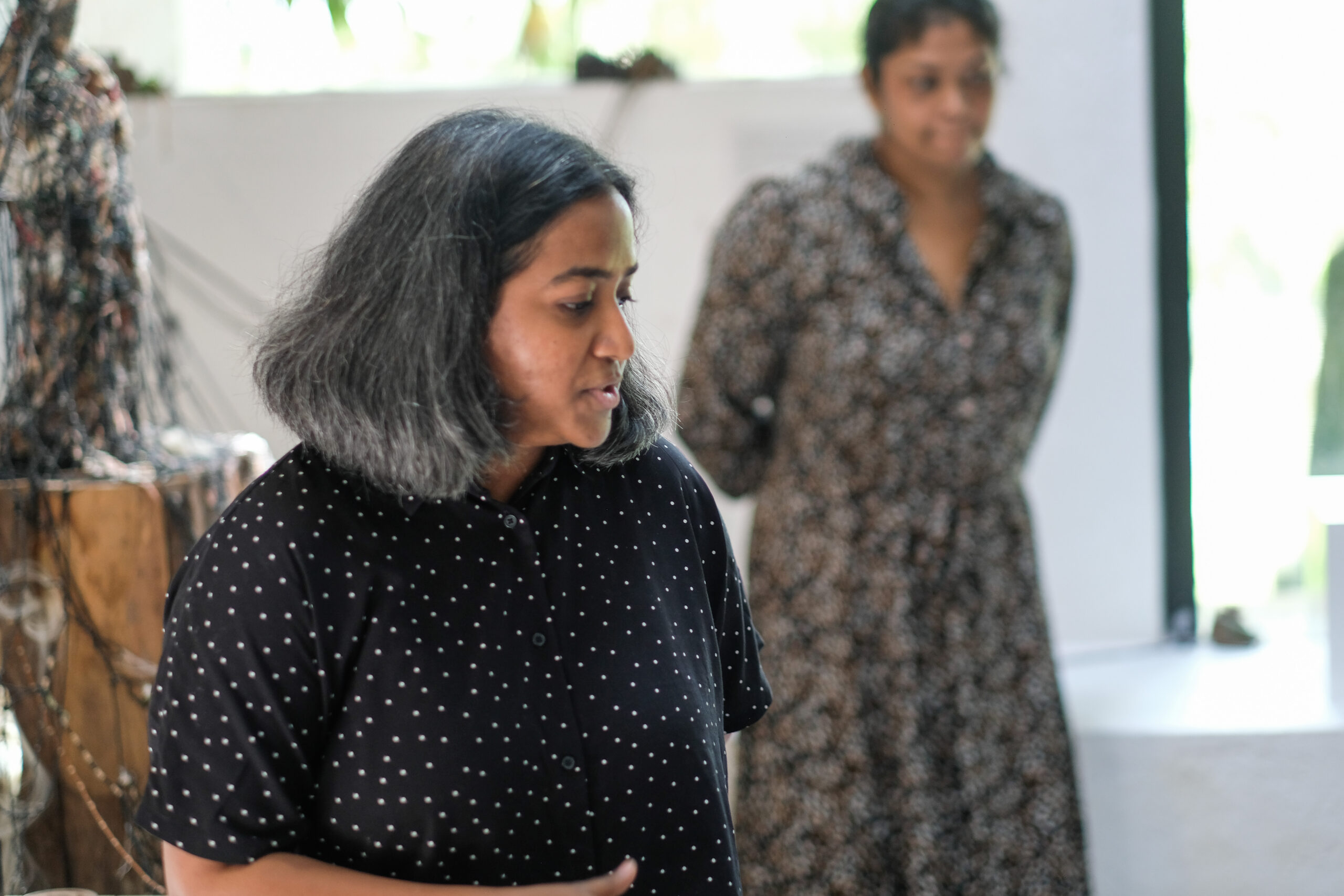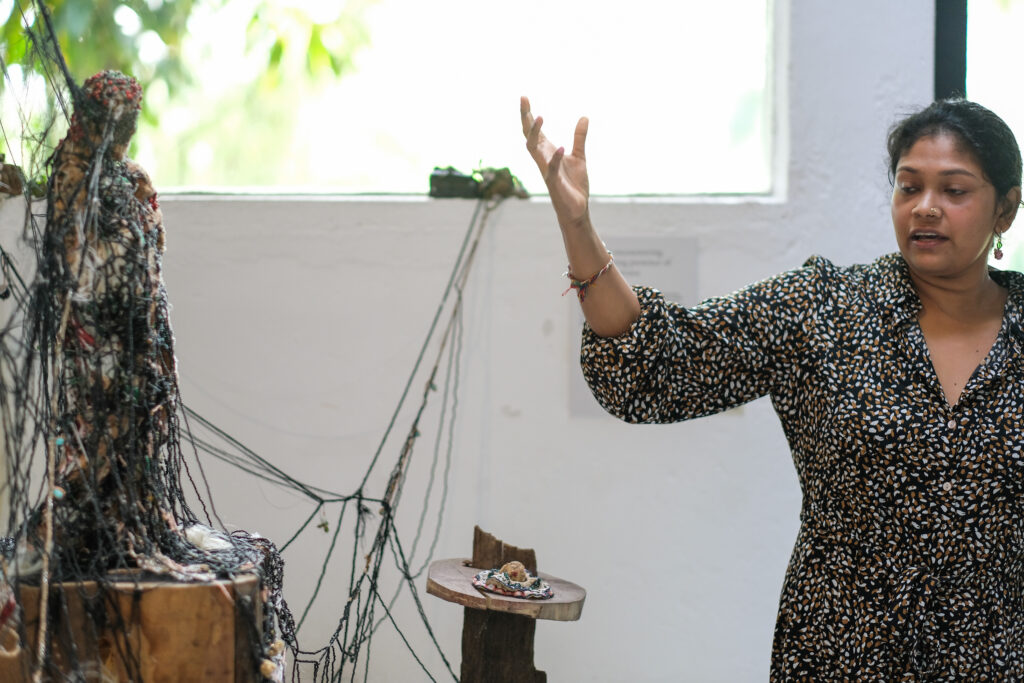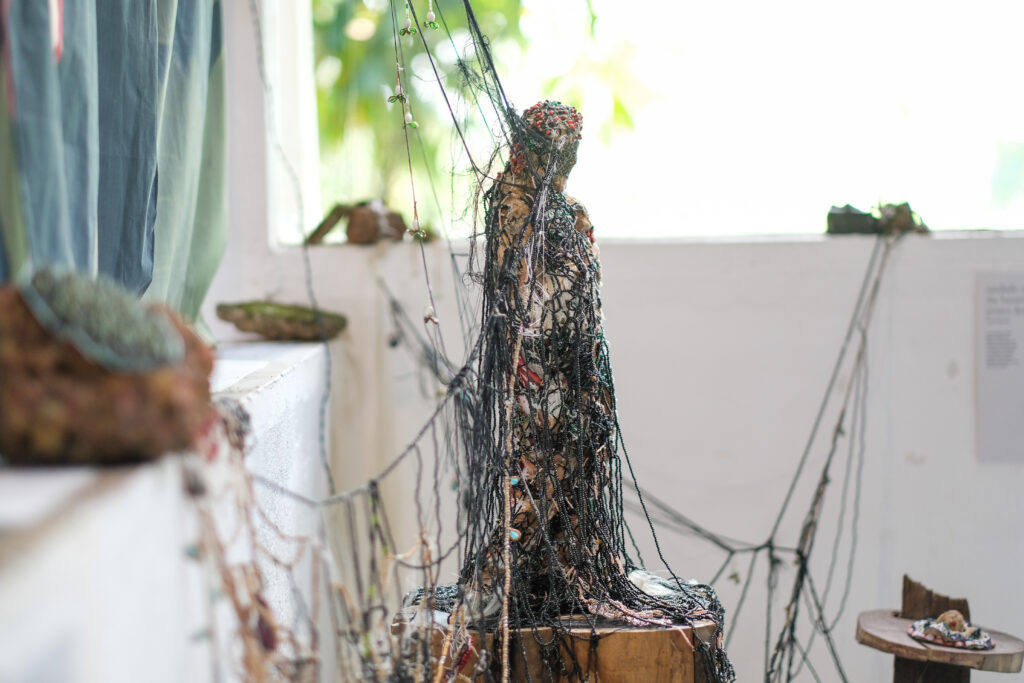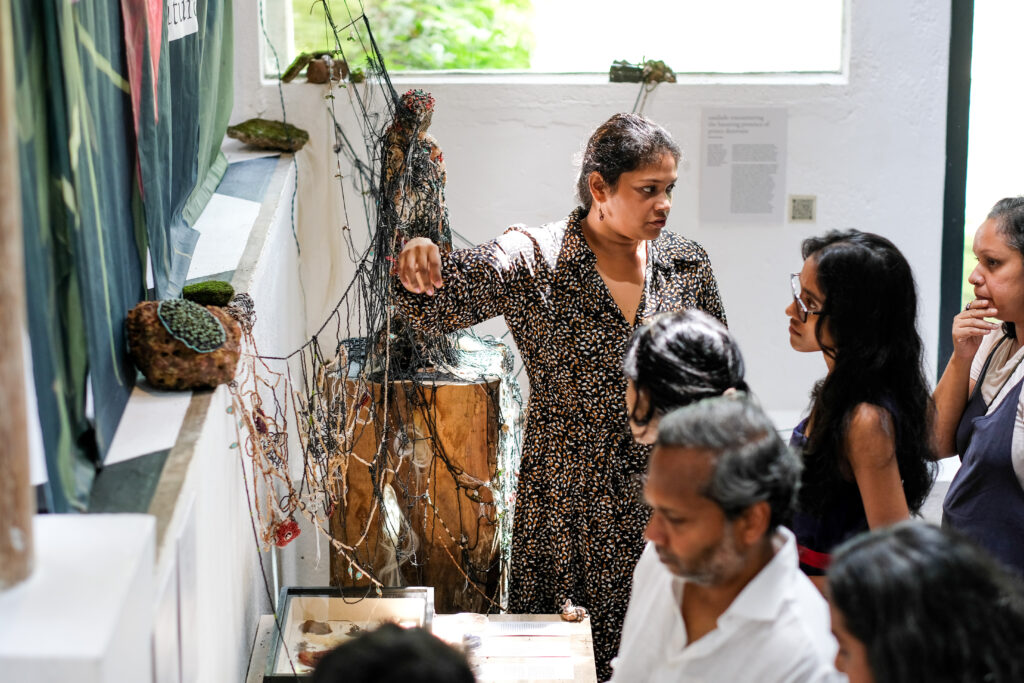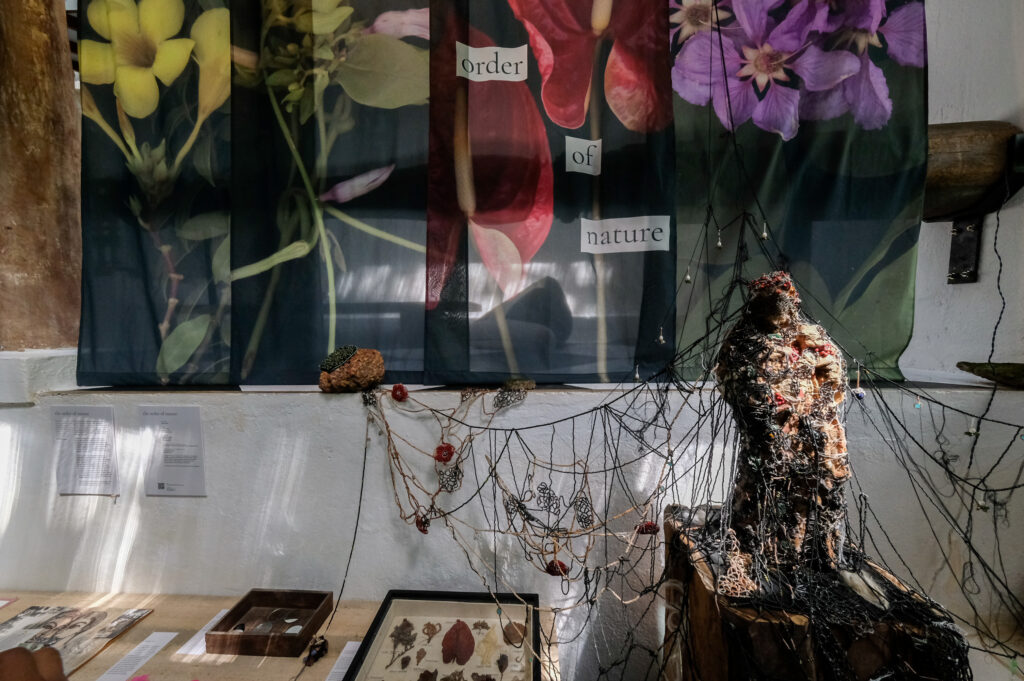

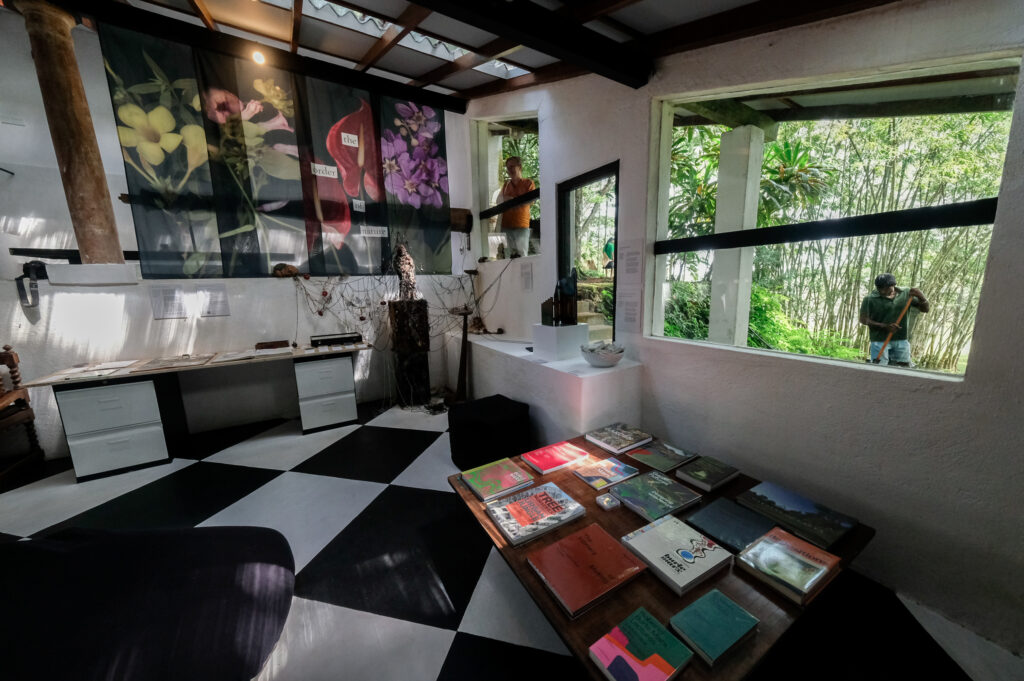
Project name : The Order of Nature’ is a curatorial project exploring intersection of queerness, architecture, and landscape design, with a specific focus on Lunuganga gardens created by Geoffrey Bawa. Explored against the backdrop of colonial penal codes that criminalize queer bodies, this project examines how Lunuganga subverts traditional paradigms of garden design through its representations and ecological aspects which questions the perceptions of what defines “normal” and “natural”.
Project was curated by : Thilini Perera ( Design and communications manager at the Geoffrey Bawa Trust)
Doravana introduction:
Sharing this here for reference, its the passage from the book: From the bridge and veranda the land rises from the shallow valley to the crest of Cinnamon Hill, the old moonamal tree and the Ming jar. These huge jars are relics of the Portuguese eastern trade in spice oils in the sixteenth century, now found only rarely, often used for storage in village houses on the west coast of Sri Lanka. Here the view progressively widens over the lake, revealing a typical low-country landscape of rice fields and low hills, one of which on the further edge of the lake – is called Doravana and is said to be the site of a small palace of a minor prince of the thirteenth or fourteenth century. The name “Doravana” means “iron doors” and on this site there is believed to be buried treasure guarded by spirits and snakes. The southern limit of the lawn is again a terrace with further terraces dropping down to flat fields and the edge of the lake. One of the irrigation windmills is built atop a folly – a brick tower – a gazebo where a guardian can look over the cultivated terraces and, perhaps on the nights of the full moon catch a glimpse of centaurs in pineapple fields.
( Source of information : Geoffrey Bawa , Lunuganga ,1991)
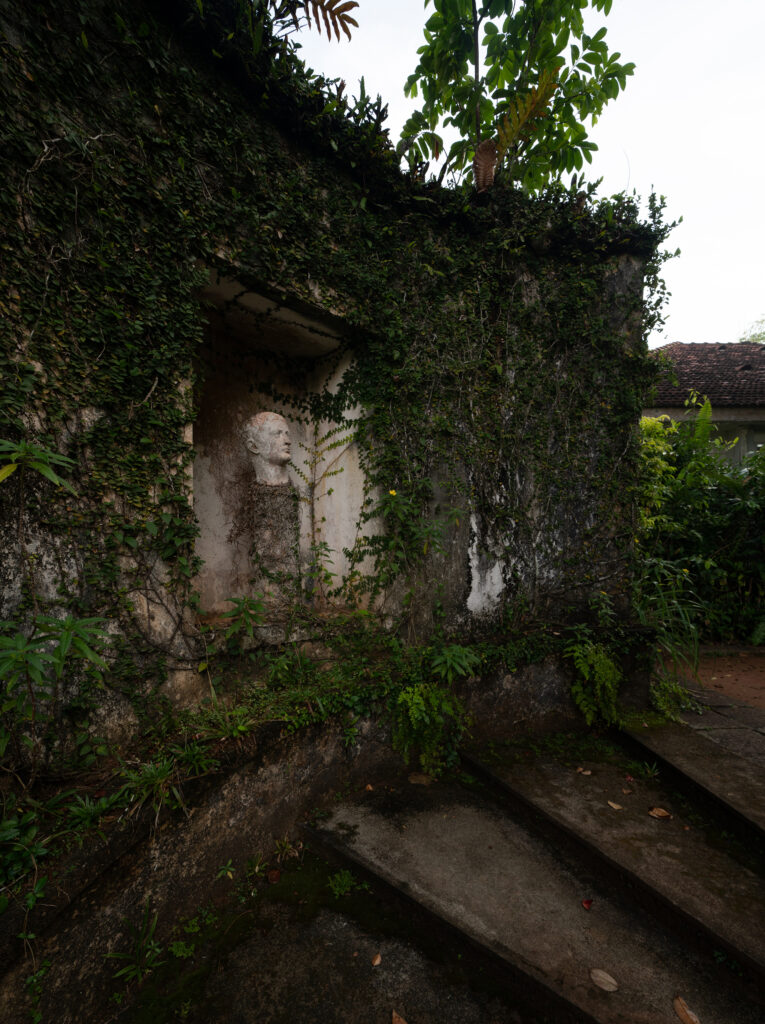
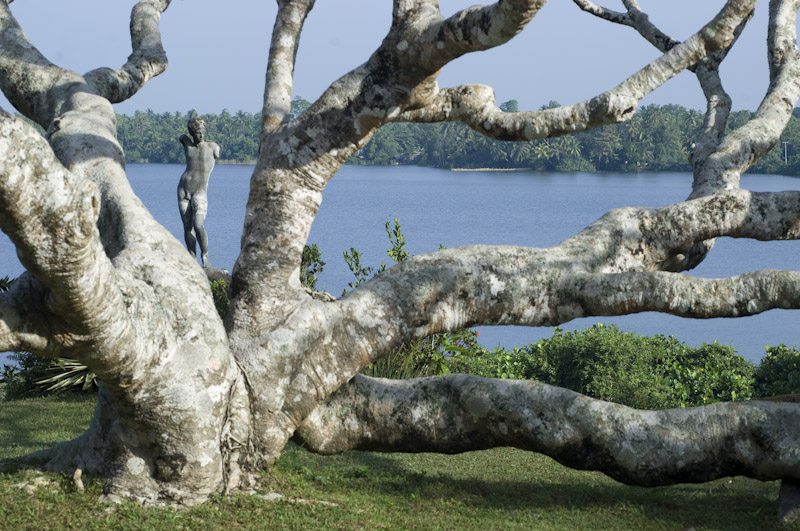
“A garden is like the self. It has so many layers and winding paths, real or imagined, that it can never be known, completely, even by the most intimate of friends.”
– Anne Raver, contemporary American garden writer (Deep in the Green, etc.)
“What is less discussed, though, is the mythology from the multitude of cultures which prevails throughout the drawings, book and garden. In the book we see representations of centaurs, nagas and fauns (all hybrid, all half-human, half-animal) sitting side-by side with Bawa’s descriptions of the restless spirit of a dead monk who lives in a tree and the view of a place with the buried treasure belonging to “Prince Doravana”. – Jyoti Dhar’s, writing on Lunuganga
Creating a ritualistic performative mapping that draws parallels within the mythical spaces of the divinity “ Black prince”, oral narrative, and the queer spaces of trajectories. An absence that permits a viewer to encounter a strange presence that occupies a sense of nostalgia, a longing that represents an event or encounter in the idyllic construct of a utopia. Is this what is called a fantasy, reimagination, or mirage of silhouettes that are encountered in this dreamscape?
Jacques Derrida states at the dawn of the mechanical age, the existence of queer presence can be witnessed as a haunting presence; neither living nor dead, present or absent not belonging to any form of ontological discourse. An absence that permits a viewer to encounter a strange presence that occupies a sense of nostalgia, a longing that represents an event or encounter in the idyllic construct of a utopia. Is this what is called a fantasy, reimagination, or mirage of silhouettes that are encountered in this dreamscape? Ensemble of elements layers in the form of a mapping creating a tale of the entity “ Black Prince” that delves between absent presence, fragments of its degeneration, loss, or death. Nostalgic longing for an encounter, a presence that has been lost yearning to return to that tangible essence of love that remains. This dreamscape continues timelessly, an itinerary of a haunting ephemera of a being gradually succumbing to the tamed wilderness of its creepers and canopies.
Centaurs, Nagas, Fauns and leopards running across the terrains of pineapple fields under the starry night and windy breeze. These mutants’ restless scorch for a buried treasure of Prince Dorovana , guarded by the spirit of a dead monk.
Inspired by the Lunuganga gardens of Geoffrey Bawa and his pursuit of creating an haunting ensemble of encounters. I begin to witness the presence of tiny creepers, jotting out from the constrains of the structures , gradually devouring them from the canopies. At last we encounter the mutant being succumbed to its wilderness by these overgrown creepers, flora and fauna. Once again the spirits roam freely with the Nagas, centaurs and the leopards amidst its chaos dreaming for a realm that they can finally roam freely.
The project was executed along with a sculptural installation and performances. The performance was infused as an AR generated module, where the audience could perhaps generate a speculation onto perceive objects beyond the tangible realm. A detour of the garden was curated by Thilini Perera alongside with Chathuri Nissansala, on the aspects of formulating queer analogies on queer time, abject objectivity and queer ecologies the architect Bawa might have brought into his garden space.
Process
The textile tradition infused in this project taken from the talismanic patterns created for ceremonial attires in the Southern ritualistic performing tradition , which prevails in the Southern coastal region of Sri Lanka( including Bentota where Lunuganga garden is located ). Black within the ceremonial attire making is considered to be a symbolic color that communicates obtain enlightenment or nirvana. Oral narratives indicates Guatama Buddha , after obtaining enlightenment wore a black robe to communicate his achievement. Black, due to socio political conditioning has moved into be a color prohibited to be worn within the temple premises as well as in rituals.
The alienation of the color and also its symbolic notion of annihilation , brings a backdrop to this installation about an identity which is not been discussed about Bawa. Layers of used tea filter creates a derma structure around the sculpture , infused with Jack fruit seeds and Madatiya ( Adenanthera pavonina) seeds collected from the gardens. To create the texture of the glue-ish rubber sediments found in the garden, layers of fevicol glue with silicone glue was used on the surface layering .
Beads made from coconut shell, wood beads, stone beads creates a webbed structure expanding within the space interconnecting each element in the form of a webbed structure. Beaded patterns in the forms of moss , fungi, tendrils , shoots engulfs elements of stone and surfaces within the space. There are floral patterns of the pants , which Bawa has specifically introduced in his construction. Hermaphrodites such as red jasmine , blue olive and its flowers , also blooming blue water lilies that emerge from the murky brackish water symbolizes natures coexistence of a queered persona.
Bawa’s interplay of hidden lights and elements of contrasting material infusion of forms together was introduced while constructing the pedestal structures. Using materials such as bard of a coconut tree and wooden light box , with a single light emanating from within.
The bottom foot of the pedestal, inspired by the stone pedestal structure that holds a stone carved portrait of Bawa , in the ‘ small roman pavilion’ in the garden. A seated headless buddha shaped figurine and the head of another figurine intertwines with each other through the webbed tendrils creating a tri connective formations of the narrative of Prince Dorawana. Viewers are to placed in the process in search to find the exact formation of mythical prince or perhaps not ?.
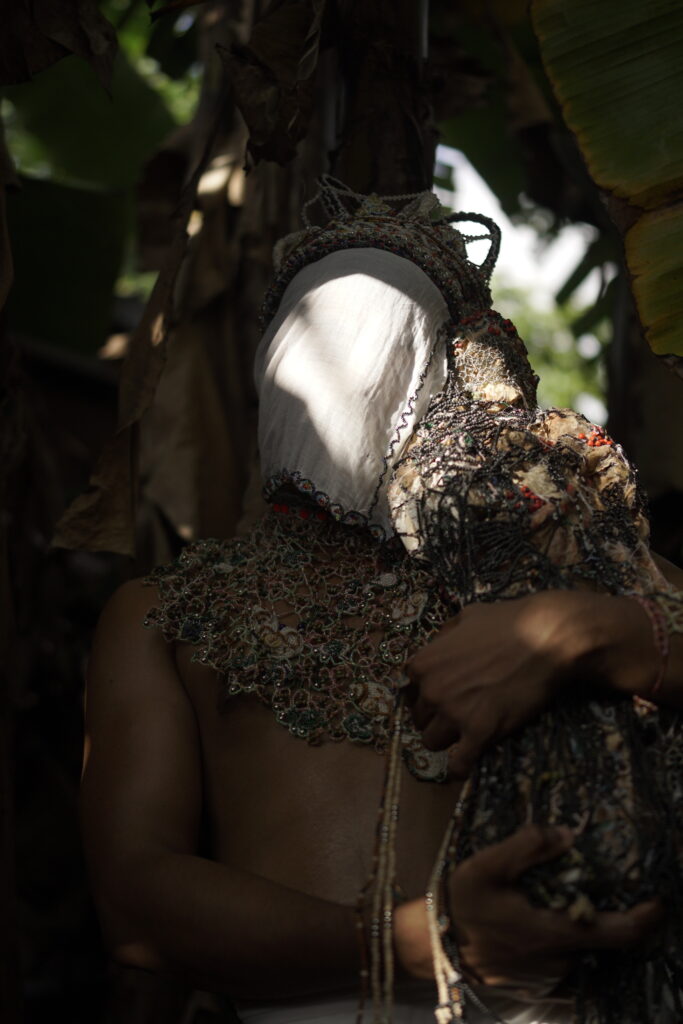
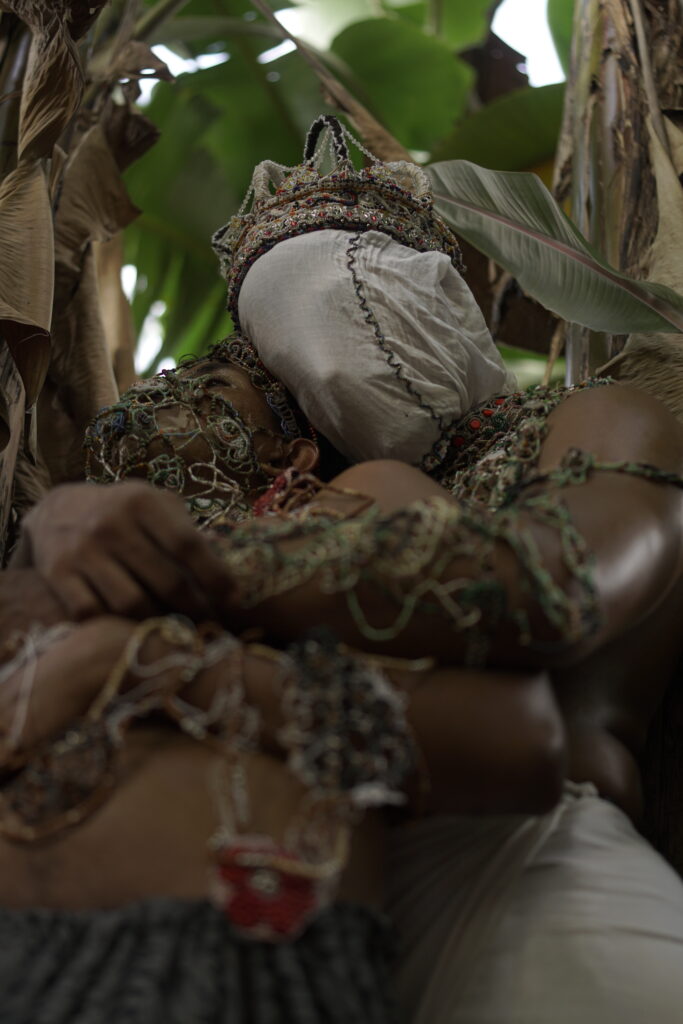
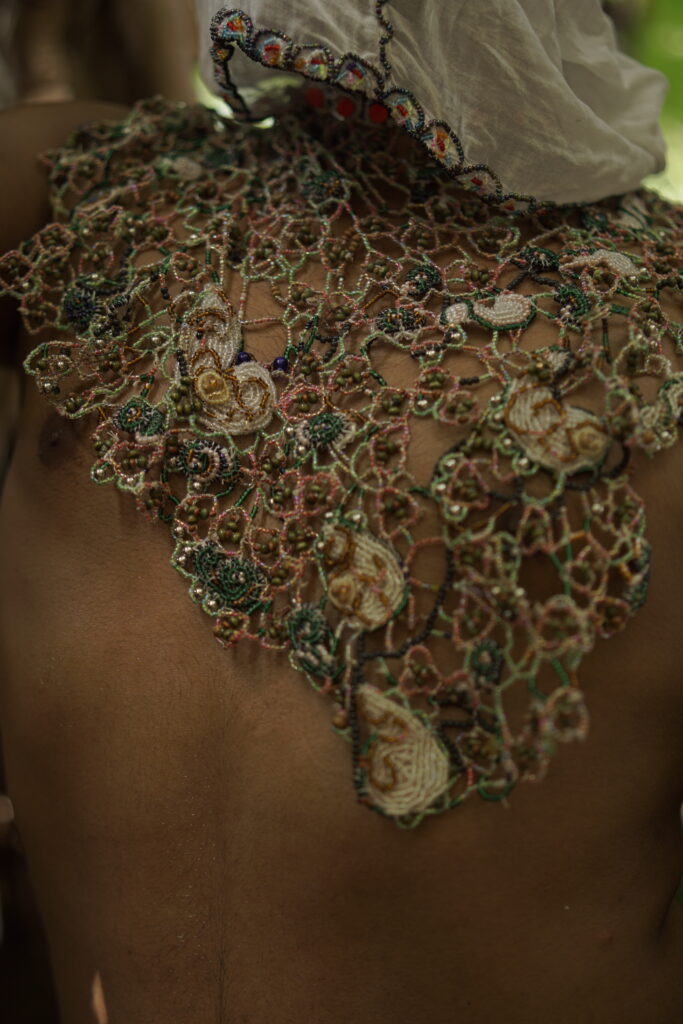
Subjects discussed :
Abject objects , to investigate materiality and aesthetics, what is to be considered beyond the categories of modern heritage , artifacts , assemblage structure that don’t fit into the contemporary heritage values.
Roman head( object in the garden): If you want to see queerness there is nothing exactly specifically that can be pin posted as this is queer but a layered presence and absence. Questions over what is actually queering here ?
Timelessness, unbounded, disseminates the structures of their subjective and continuous timelesslyThis is where the spaces, time and the tangible collapses one another mirroring towards an unbounded futurity which you encounter throughout this journey.
Mirroring of identity, desire but the ambiguous nature of the feral demography : Heritage is also inherited by the non-human being : what is left behind and how ecology reacts with those that left behind shows a new mirror vision of looking back also the remains of a cultured past but the unpredictable wilderness of feral ecology that have encompassed. To revisit again and again where this wilderness is heading and why it has been maneuvered in space unbounded.
Secrecy and paddy fields: Paddy as a symbolic being that conveys a folk narrative about a being born spontaneously. The existence of paddy fields still available within the garden perhaps could e connected to this mythical tale.
Endless evolving of the garden that a gardener may never witness in their lifetime: Like the journey of an individual being , queer existence is a life long journey of evolving and transgressive. Perhaps it is an existence that one might never able to bear witness and encapsulate to a category.
